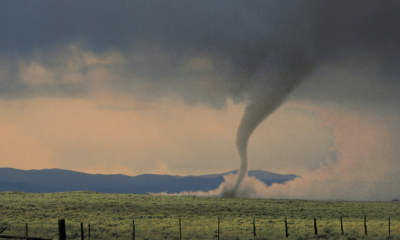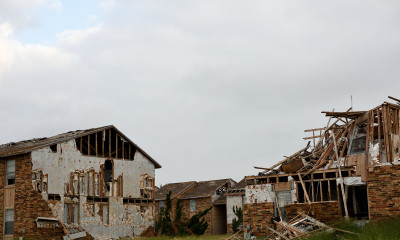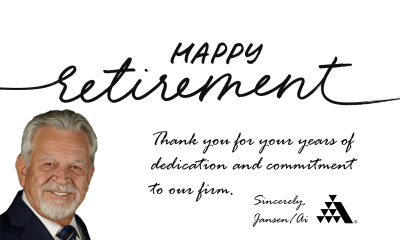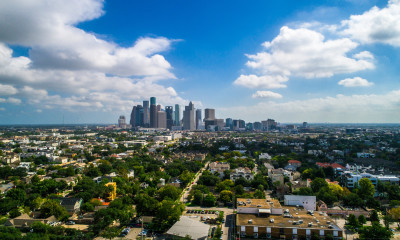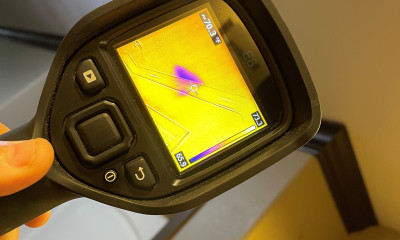Six Tips for the Six Days Following a Business Fire or Other Commercial Property Disaster
With the National Fire Protection Association reporting that more than 136,000 non-home structure fires in 2015 caused almost $3.3 billion in direct property damage, learning that a business property has burned down is one of many business owners’ worst nightmares.
"When your business burns down, many important and possibly costly decisions need to be made quickly. The future success and survival of your business may depend on what the management does in the days immediately following the fire so these decisions should not be taken lightly."
Luis R. Esteves
Principal & Executive General Adjuster at Texas-based Jansen/Adjusters International
We talked to the property insurance experts at Jansen/Adjusters International – a Houston-based public adjusting and disaster recovery firm – to find out what business owners should do in the first six days after a disaster. Here are their top tips:
1.) Take Steps to Prevent Further Damage
All policyholders are required to take mitigation steps to protect any remaining contents or structure after the fire has been extinguished. If the policyholder fails to mitigate the loss to undamaged property, then the carrier can deny coverage for the additional damage.
"While each loss is different, tarping roof holes, turning off water mains in cold weather conditions and adding security fencing around the damaged building are just a few examples of the types of loss mitigation that the carrier expects to see upon their arrival. Using your contractor or maintenance staff for mitigation purposes may not be enough to satisfy the carrier’s requirements so I suggest that business owners call a professional loss consultant as soon as possible to help them determine what mitigation steps are required under their purchased policy."
Bill Sharpe
Regional Director at Texas-based Jansen/Adjusters International
2.) Speak to the Experts
Business owners should take the lead by speaking to their own experts and emergency responders. This can include procuring their own fire report from the fire marshal office, requesting current building codes from the local building department inspectors, hiring a public adjuster to guide them through the claims process and enlisting the help of engineers and architects to determine the extent and cause of the damage.
"The first mistake that a business owner makes is assuming that their insurance company will take care of all the details and look out for their best interest but, due to heavy workloads and competing interests, this is not always the case. We always recommend that the insured stay active in procuring their own experts and collecting their own documentation. A licensed public adjuster, who works only for the policyholder and not for the insurance company, can assist with this process."
Luis R. Esteves
Principal & Executive General Adjuster at Texas-based Jansen/Adjusters International
 3.) Notify Your Insurance Company
3.) Notify Your Insurance Company
All policies require that the policyholder notify the insurance company from which the policy was purchased within a reasonable time after the damage-inducing incident occurred. Policyholders should be ready to provide their insurance company with the date and time that the fire occurred, a copy of the fire report if it has been completed and any other preliminary details they may have regarding the extent of damage and required repairs.
"Commercial policyholders need to remember that their insurance policy is a contract between their company (the “insured”) and the insuring body (the “insurer”) and that makes this step one of the most important. However, they do not need to sign any binding settlement agreements or repair cost estimates at this point. They only need to notify the insurance company that damage has been sustained."
David Moore
Chief Operating Officer at Texas-based Jansen/Adjusters International
4.) Stay Organized
Create a tabulated binder to hold copies of your full insurance policy as well as all estimates, written communications, receipts, claim-related notes, and back-up documentation. An adequate organization system will help the owner to prove their claim and to meet all of the required policy conditions.
"Organization is the number one tool we use when presenting a claim. There is a world of difference between meeting the insurance company’s representative with an organized binder of claims presentation materials and just handing them a messy box of crumpled papers. It is always the policyholder’s responsibility to prove their claim but unless these documents are presented in an organized and supportable manner, they will have very little chance of recovering a full settlement."
Luis R. Esteves
Principal & Executive General Adjuster at Texas-based Jansen/Adjusters International
5.) Know That Fire Claims Are Unique
Fires are unique in a number of ways but smoke damage and water damage are often the biggest challenges. The insurance company’s representatives may fail to look for deterioration beyond what they see on the surface. However, smoke from the fire and water used to extinguish the flames can often seep behind walls, under flooring and above the ceiling. This undetected damage can later lead to weakened building materials and hazardous mold growth.
"Damage caused by smoke and water is sometimes worse than that caused by the actual fire because it can be hidden or found in another part of the building. Missed smoke or water damage sustained in December may become a huge problem the following June when rising temperatures and humidity cause the smoke and water to heat up and spread."
Benny Wright
Regional Sales Manager at Texas-based Jansen/Adjusters International
6.) Stay Calm to Avoid Bad Decisions
The fear of halting operations and the urgency to reopen can cause many business owners to make expensive compromises during the claims process. Although this may help the business to reopen more quickly, rushing can lead to larger financial losses down the road when the building is compromised and additional repairs must be made at the owner’s expense, and also resulting in longer disruption of the business.
"It’s understandable that business owners don't want to lose existing customers or delay orders but rushing to reopen can lead to major problems later. Owners should take a step back and assess the big picture. Rather than becoming consumed with reopening quickly, they should focus on getting any repairs or rebuilding done right."
Benny Wright
Regional Sales Manager at Texas-based Jansen/Adjusters International
Although it may never be possible to be 100% prepared for any and all types of business fires, by planning ahead, working with qualified experts and following the tips above, business owners will have a much better chance at thriving financially after major property losses.
Jansen/Adjusters International’s public adjusters can help you recover from severe property damage. Visit the contact us page here or call 800.992.7771.



